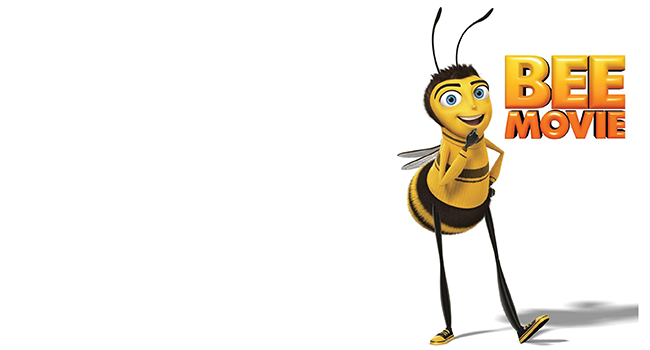By: Ryan McDearmont
In our culture of information, nothing truly stays buried.
Yesteryear’s productions find new purchase as inspiration for the creations of today: the Netflix series Stranger Things and the recent film Ready Player One stand as sterling examples. The ideas, concepts, and images cast behind in the never-ending march of content consumption aren’t forgotten or erased, but rather stored away in some distant corner of collective memory, laying dormant for another chance at relevance. When these works recycle into conscious perception, the resurfacing can be explicit and bombastic (think Mad Max: Fury Road), or deceptively simple. A coworker asks if you remember, say, Gremlins 2. Suddenly, thoughts of the movie occupy your conscious mind – thus, Gremlins 2 is relevant again, even if only on a personal level.
Thanks to the archival nature of the internet, these pockets of pop-culture interest and relevance have grown more frequent and more unique. Whole articles and pages of the web are devoted to books, films, television shows, and other pieces of media which might have otherwise faded into obscurity without our current ease of information. Forgotten media finds new audiences as it propagates across the digital frontier through discussion, archival sites, and memes, and the ease of digital accessibility places works from the 1950s on the same playing field as works from the 2010s. A film which might not have found an audience upon its initial release goes viral, and meets a larger network of fandom which might have been too young, too uninformed, or too busy to see the movie in its first run. Sometimes, for whatever reason, this new “audience of the internet” falls far beyond the intended group for which the film was made. Such is the case with 2007’s Bee Movie, a movie which has remained bafflingly relevant some 10 years after release.
But to state that the new, second-wave audience of Bee Movie exists outside the film’s “intended” viewers would imply that Bee Movie offered the smallest shred of cohesive thought to who might be watching it. Ostensibly a children’s film also meant to please adults, Bee Movie ping-pongs so haplessly between tone and subject matter that the resulting experience is nothing short of whiplash. Supposedly, kids enjoy Bee Movie for the trite, bright aesthetic and endless B-list bee puns, whereas adults should enjoy Bee Movie for the outdated pop culture references, adultery subplot, and – suicide jokes? By allegedly attempting to appeal to everyone, Bee Movie instead appeals to no-one. It’s this unintentionally hilarious and extremely baffling mash of subject matter which ultimately propelled Bee Movie from B-movie (or even C-movie), to internet stardom.
For this, we can thank Jerry Seinfeld. Once the most well-known comedian in America, Seinfeld rightly enjoyed a wave of success thanks to Seinfeld, the now-iconic “show about nothing.” The style of Seinfeld is immediately recognizable: everyday people, caught in a series of social faux pas and self-imposed blunders, try their best to hold together in ultimately inconsequential situations which are blown up to titanic events. The writing is casual, relatable, and occasionally referential, but also complex and adult, largely thanks to reliance on audience experience. How much would a kid appreciate the hilarity of being lost in a parking garage?
This manner of comedy works well in the context of Seinfeld. With a tight half-hour (23 minutes with commercials) to deliver the goods, the interwoven plotlines and comedic bits don’t get time to languish around and eventually lose their luster, and the interactions themselves are buoyed by the incredible talent and chemistry of the main cast. Seinfeld’s style is the purest distillation of Jerry Seinfeld’s comedy, which has largely remained the same over the years. While his type of humor works well in bite-sized sitcom format, supported by other equally talented members of the production, the jokes don’t fly so well when bloated to 91 minutes and dragged down by a cast which wholly lacks confidence in the material. Thus, we return to Bee Movie.
It’s difficult to discern what Jerry Seinfeld was thinking when he created Bee Movie. You can’t blame him for trying. The Disney-subverting Shrek franchise had made it big with Shrek 2 a few years earlier, so it’s likely Dreamworks was on the prowl for more films which could satisfy kids while simultaneously entertaining adults. According to Seinfeld, the initial idea for Bee Movie “was a joke,” but at some point the wires crossed and Dreamworks signed off on Seinfeld’s apicultural apocalypse. So, the film about a bee who falls in love with a florist and sues the entire human race went into production, and was unleashed on unsuspecting audiences the 10th of November, 2007.
If you went to see Bee Movie opening day, you’d be forgiven for assuming the movie would be, well, good. The first trailer features a live action Jerry Seinfeld and crew attempting to film a scene of bugs on a car windshield wiper, with Chris Rock and Seinfeld himself dressed in absurd, cheap costumes of their respective insects. They exchange dry greetings and casual talk which contrasts their ridiculous situation, with Rock in particular none too happy about his role. Then, the director calls action, and suddenly the actors tumble across the giant windshield set, screaming and desperately attempting to escape the huge wipers and sprays of water. It’s a Seinfeld-esque situation that quickly devolves into an even more nonsensical farce, and all things considered, it’s pretty funny for a two-minute trailer.
Unfortunately, it also reveals the problems which would ultimately plague Bee Movie. While Seinfeld’s comedic style comes through strong in the dialogue and set-up, it’s promising something which doesn’t exist. A movie about the making of a ridiculous insect-based film would be a much more entertaining premise than the insect film itself, and there’s a certain tongue-in-cheek nature to the trailer that’s completely devoid from Bee Movie’s final product. In addition, there’s not much to appeal to kids in this trailer. Children are smart, yes. However, so much of the humor relies on appreciating the absurdity of the situation, and familiarity with Seinfeld, that most kids in 2007 probably didn’t get it. What else is there to laugh at? Sure, there’s the slapstick element, but it can only go so far. The trailer spends a lot of time playing to adults at the expense of appealing to kids, and its this unbalanced exchange which mars Bee Movie as whole.
The opening segments of Bee Movie are abysmal, but so are the middle segments and the concluding segments. Our protagonist, Barry B. Benson (Jerry Seinfeld), graduates from college and then undergoes orientation at Honex Industries, where he learns he must pick a single job which he will work for the rest of his life. This sets him down the path to an existential crisis, where he decides he’ll leave the hive instead of working as a drone until the end of his days. His internal conflict provides a springboard for the rest of the film, in which he begins a relationship with human florist Vanessa (Renée Zellweger), discovers the “theft” of honey by humans, wins a lawsuit against the human race, accidentally destabilizes the earth’s ecosystem, and eventually realizes that bees and humans must work together to maintain the environment. Roll credits.
The ending message is a good one. However, after 91 minutes of infuriating bee puns, weird intimations of Barry and Vanessa’s “relations,” and no end of other jokes too adult for children but too strange for adults, it’s a mercy that Bee Movie ends at all. I saw the film on its release at age 12, and I remember thinking it was okay. Not great, but certainly not horrible. Returning to it ten years later, I can barely finish it. Bee Movie is too unbalanced, too referential, and just too bizarre to be enjoyed. The twin spectres of disbelief and bafflement hang heavy: why did Ray Liotta need to be in the movie as himself? Was it necessary to have Barry’s parents move to a hive ruled over by a “drag queen?” Why on earth does a character refer to Barry as Vanessa’s “bed bug?” It’s clear Seinfeld didn’t adjust his tone to fit the script of a children’s film. As a result, Bee Movie can never truly engage viewers. The wild oscillations of tone and content don’t provide an easy entry into the film’s world, and as such, it’s never easy to sit comfortably with Bee Movie.
It’s these alien moments which define Bee Movie. The jarring jokes become the norm, and create a hybrid, lackluster experience which is neither a half-baked children’s film, nor a mediocre adult comedy. Instead, it’s a puzzle: who attempted to fit the square peg of Seinfeld’s unmistakable humor into the round hole of a kid’s movie about bees? Perhaps, amongst other factors, this essential enigma at the heart of Bee Movie is why the film has remained relevant through 2018, resurfacing into our cultural memory long after its mercifully brief moment in the spotlight.
Through 2016 and 2017, Bee Movie found itself catapulted into relevancy once again, not as a film, but as an internet meme. Endless edits of the film surfaced, such as “The bee movie but every time they say bee it gets faster,” which condenses the entire movie to a much more tolerable seven minutes. Social media users began to dissect the film, incredulously noting many of the same oddities I’ve detailed here. Barry B. Benson’s face was plastered across platforms Twitter and Tumblr for several months, and T-shirts were made with the entire script of the film condensed to a single block of tiny text. As with most memes, it’s difficult to state where exactly Bee Movie found its resurrection, but it’s likely thanks to those who saw the film as children growing up, looking back, and saying, huh, wasn’t that weird?
They’re right, of course. Bee Movie is a truly weird film, much stranger than one might assume. It’s an absolute misfire of a children’s movie, and truly insufferable in its adult appeal. However, Bee Movie remains terrifyingly relevant. It’s likely the first title someone will recall when you mention the concept of “bee films,” and its propagation as a meme means that more people have likely been opposed to Bee Movie than The Spirit of the Beehive (1973), or The Swarm (1978), or even legitimate documentaries such as Vanishing of the Bees (2009). For better or worse, the world of bees in film is defined by the existence of Bee Movie. More so than any other work, Bee Movie has left an indelible mark of pop culture’s perception of bees. As Bee Movie itself might put it, it’s the bee-all and end-all. It’s appropriate, in a sense. With a title as ubiquitous as Bee Movie, it couldn’t be anything less than the reigning king of bee movies.
From The Deadly Bees in 1966, it took 41 years to reach Bee Movie, which may have once again killed the concept of bee-based films the way The Swarm did back in 1978. Perhaps it’s for the best. With the hurried honeymakers once again having been phased out of fictional films thanks to a movie mishap, bees are free to inhabit the realms of documentaries and fact-based framing, which will likely do them far more good. It’s true that Bee Movie ultimately posits a positive future for humans and bees alike, but the road it takes to get there is one which remains nigh unwatchable. The film’s opening states, “according to all known laws of aviation, there is no way a bee should be able to fly.” This is true for Bee Movie itself, which, despite all odds, has remained in flight across 10 long years. Let’s hope it lands before too long.








